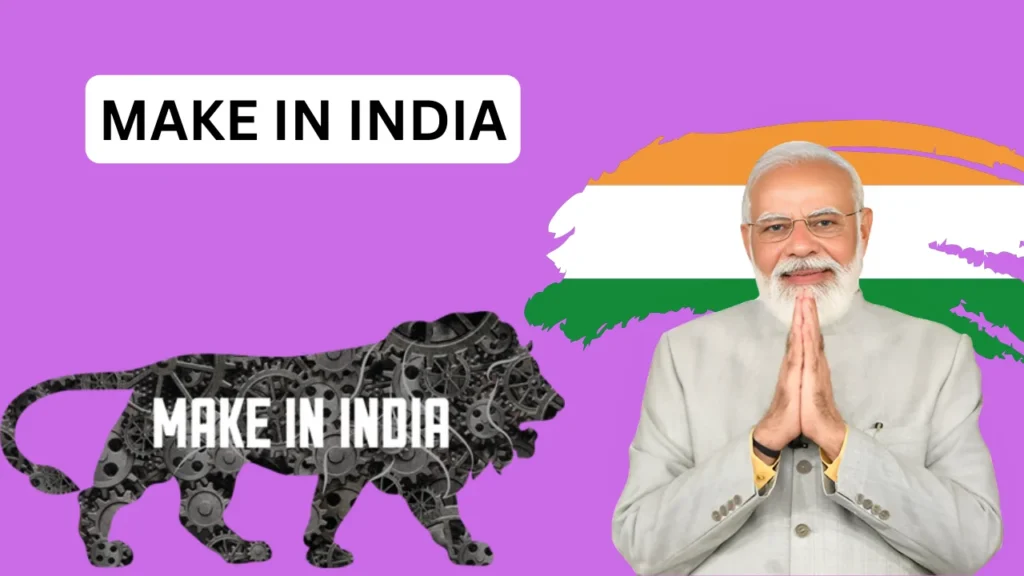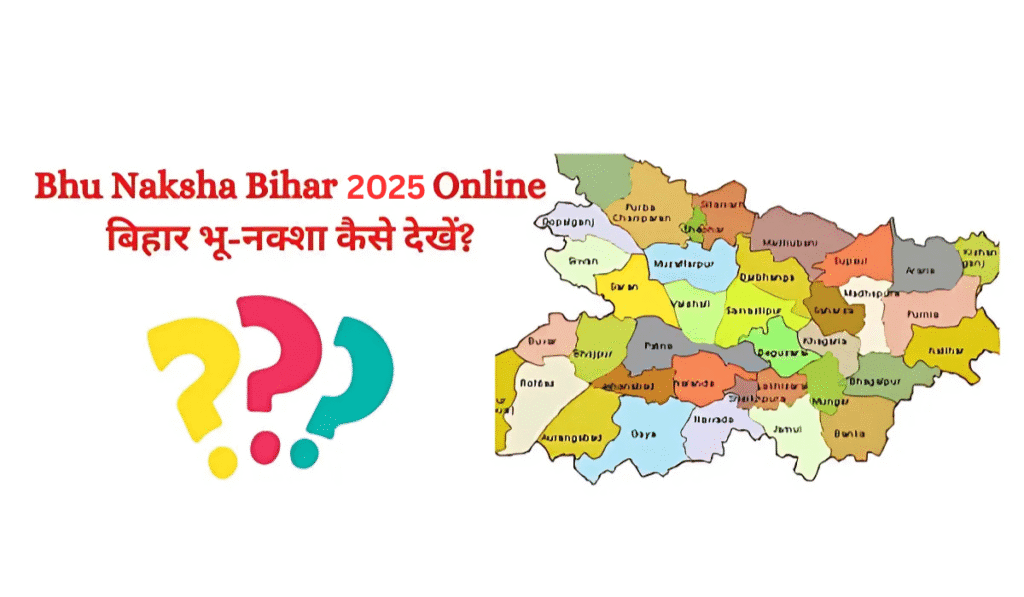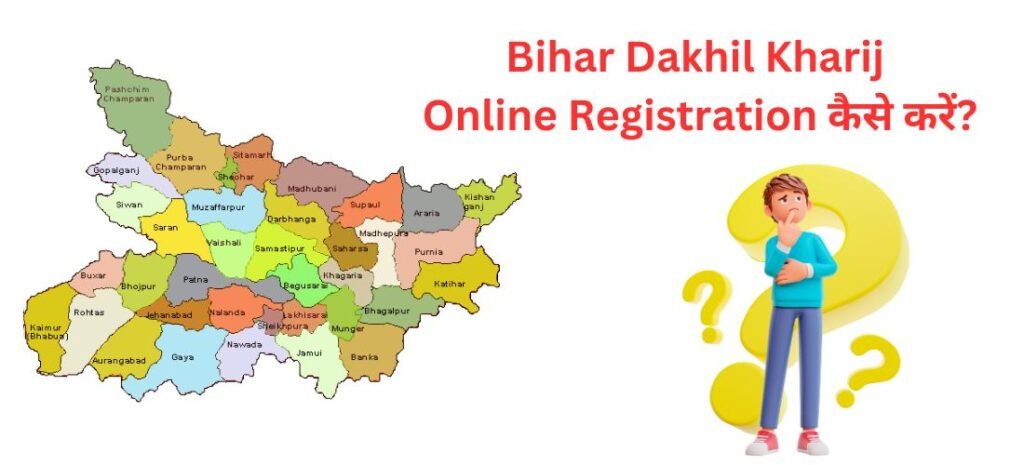
“India is walking ahead with the idea of “Make in India” “Make for the world”: PM Narendra Modi.
What is Make In India?
Launched in September 2014, an initiative taken by the Government of India to encourage both multinational and domestic companies to manufacture their products in India. The main aim of the program is to increase manufacturing in India, create more employment, and foster skills and innovative development.
Essential Elements of the “Make in India” initiative include:
Improvements in Speculation: Luring in outside direct speculations (FDI) by changing rules, and concessions through media advertising, and improving trade strategies in India.
Infrastructure Improvements: Improving infrastructure such as industrial corridors and logistics systems to enhance manufacturing capabilities.
Skills Improvements: Training and upgrading the skills of employees to meet the demands of the changing industrial scenario.
Explore and innovate: Enabling research and advancement and instilling a culture of innovation in the manufacturing industry.
Gaining Access to Trade: Making it easier for companies to start and operate in India by simplifying bureaucratic processes and reducing red tape.
| Name of the scheme | Make in India |
| Country | India |
| Prime Minister | Narendra Modi |
| Key people | Ministry of commerce and industry (India) |
| Launched | September 25, 2014; 9 years ago |
| Status | Active |
| Website | www.makeinindia.com |
Also Read:- Pradhan Mantri Jeevan Jyoti Bima Yojana | Ladli Behna Yojana 3rd Round
Make in India: Game Changer for the Country’s Economic Future
Economic Upsurge: The economic growth rate of a nation may increase through greater productivity, increased employment opportunities as well as the attraction of offshore direct investment (FDI) that are essential in making it robust and resilient.
Employment Development: Cultivating fabricating base “Make in India” points to produce work openings for the country’s huge and energetic workforce, which leads to changes in unemployment.
Improvement in Skills: Improvement in skills by preparing people in specialized mastery and down-to-earth abilities required for fabrication.
Infrastructure Improvement: Incorporates the development of mechanical hallways, ports, as well as coordination systems which are vital for effective generation and distribution processes.
Encourage Technology: To foster investigation as well as development the Initiative is meant to promote a culture of technology advancement with better quality goods and improved production processes.
Relaxation in Business: Amidst this effort, it aims to make clear guidelines and eliminate administrative barriers to improve the environment for doing business. These changes will create a more attractive and competitive landscape for both domestic and international businesses operating in India. By positioning India as an ideal manufacturing destination,
World Wide Competition: ‘Make in India’ attempts to raise the global competitiveness of the country. The initiative aims at attracting multinational corporations as well as making India’s mark on the world stage of global commodities.
Must Read:- National Food Security Act (NFSA) | Pradhan Mantri Suraksha Bima Yojana
Prime Objectives of Make In India
Below we have mentioned some of the prime objectives of Make in India:
- Development in domestic and technology departments of manufacturing sectors.
- 12 to 14% growth in the manufacturing sector.
- By 2022 creating more than 100 million additional jobs.
- Enhancing the worldwide competitiveness of manufacturing in India.
- Improvement in skills in urban and rural employees for faster employment growth.
- The manufacturing sector’s share increased by 25% in 2022.
- Creating environmentally sustainable growth.
Advantages Of Make India Scheme
Some key advantages of Make in India are:
- Creating jobs and employment opportunities.
- Increase in exports and reduction in imports.
- Boosted up financial support and increased foreign investment.
- Strengthening the manufacturing sector and economic sectors of the country
- Promotion of make-in-India products.
Other Schemes:- Ladli Behna Yojana Maharashtra 2024 | Oasis Scholarship For Education to SC/ST & OBC
Challenges Faced In the Make In India Scheme
Whereas the Make in India development has made significant advances, it moreover faces a few challenges that require to be tended to. Here are a few examples.
Infrastructure Improvement: transportation system, control supply, and coordination are big challenges in the development. Improvement in these sectors will encourage smooth operations for fabricating companies
Complex Administrative Environment: India’s administrative environment is very complex it includes bureaucratic methods and ruddy tape ruining trade operations. Rearranging controls and streamlining regulatory forms are basic to make a conducive environment for fabricating companies.
Skilled Workforce Deficiency: there is a deficiency of skilled workers in many sectors. It is very essential to have skilled workers for the success of this scheme.
Raising Competitiveness: Indian manufacturers need to enhance their competitiveness to compete globally. This involves adopting advanced technologies, improving product quality, and optimizing manufacturing processes to meet international standards.
Initiatives of Make in India
Following are some initiatives taken in the Make In India Scheme by the government of India.
Infrastructure Development
Development in Delhi-Mumbai Industrial Corridor (DMIC).
Improving logistic networks, ports, railways, and highways.
Skill Development and Training
Launching programs to train and upskill workers.
Partnering with NSDC to create specific training, programs, and certificates.
Innovation and Research
Providing incentives and support for research and development activities.
Establishing technology centers and innovation hubs.
Support for Small and Medium Enterprises (SMEs)
Supporting small and medium-sized enterprises.
Facilitating easier access to credit and financial assistance for SMEs.
Focus on Key Sectors
Growth in electronics, automotive, textiles, aerospace, and defense.
Promoting best technology and method.
Intellectual Property Rights (IPR)
Strengthening intellectual property rights and enforcement mechanisms to protect innovations and attract investment in research and development.
Green Manufacturing
Environment-friendly and sustainable manufacturing practice.
Supporting the green technology.
Public-Private Partnerships (PPPs)
Promoting collaborations among the state, business world, and other concerned parties.
Engaging in PPPs
Trade and Export Promotion
Providing incentives for expansion in export activities.
Negotiating and implementing trade agreements
Start-Up and Entrepreneurship Support
Encouraging entrepreneurship through supportive policies, funding opportunities, and mentorship programs.
Latest Blog:- Pradhan Mantri Gramin Digital Saksharta Abhiyan | Bihar Student Credit Card Scheme
Schemes Launched To Support Make In India Programme
International Solar Alliance (ISA)
India’s effort is to encourage solar technology research and development through the ISA and establish relevant guidelines for such activities.
Skill India
In India number of skilled workers is only 2% of the population. That’s the reason why Skill India was launched. The main aim of Skill India was to skill 10 million workers in India annually in different sectors.
Digital India
Digital India was launched to transform India into a digital country. To encourage digitalization for better performance of the scheme.
Pradhan Mantri Jan Dhan Yojana (PMJDY)
The yojana provides access to financial services, namely banking savings & deposit accounts, remittances, credit, insurance, and pension affordably.
Swachh Bharat Abhiyan
The mission was launched for basic sanitation and hygiene. To clean India in the upcoming years for a sustainable and healthy life.
Smart Cities
The objective of this scheme was to transform Indian cities into smart cities. The main aim was to create 100 smart cities in India.
Sagarmala
The Sagarmala program seeks to enhance its ports as well as forward development. To ensure that our country progresses further.
Startup India
Startup India was launched to foster the growth of startups in India, driving sustainable economic growth, and creating large-scale employment.
AMRUT
Atal Mission for Rejuvenation and Urban Transformation aims to build basic public amenities and make 500 cities in India more livable and inclusive.
AGNII
The Accelerating Growth of New India’s Innovation (AGNII) initiative was started to strengthen the country’s innovation system through networking and promoting innovation commercialization.
Make in India is a vision for a dynamic and resilient industrial future, more than just a policy initiative. It can secure India’s place as a leading player in global manufacturing; thus driving economic growth and contributing to a brighter future for all.
FAQ’s:-
Q1. What are the main schemes of the Make India scheme?
The four main pillars of the Make in India scheme are:
- New Mindset
- New sectors
- New infrastructure
- New processes
Q2. What is the slogan of the Make in India program?
“Zero Defect Zero Effect” is the slogan of the program which was coined by Prime Minister of India Narendra Modi.
Q3. Who is eligible for Make in India?
Either an Indian or a foreign company, which has operations of either manufacturing or providing services in India, is required. The goods should experience at least a 20% increase in value within India.


